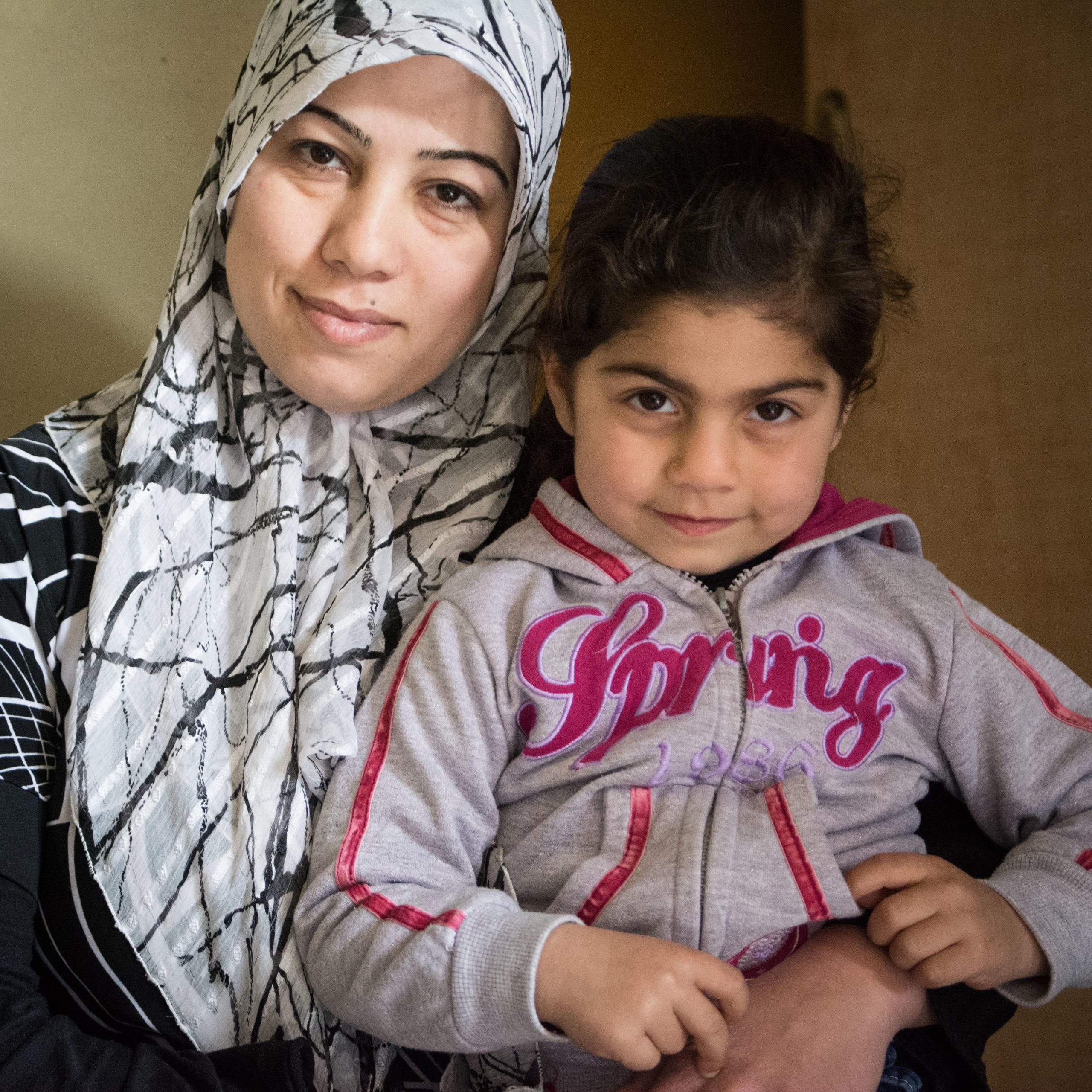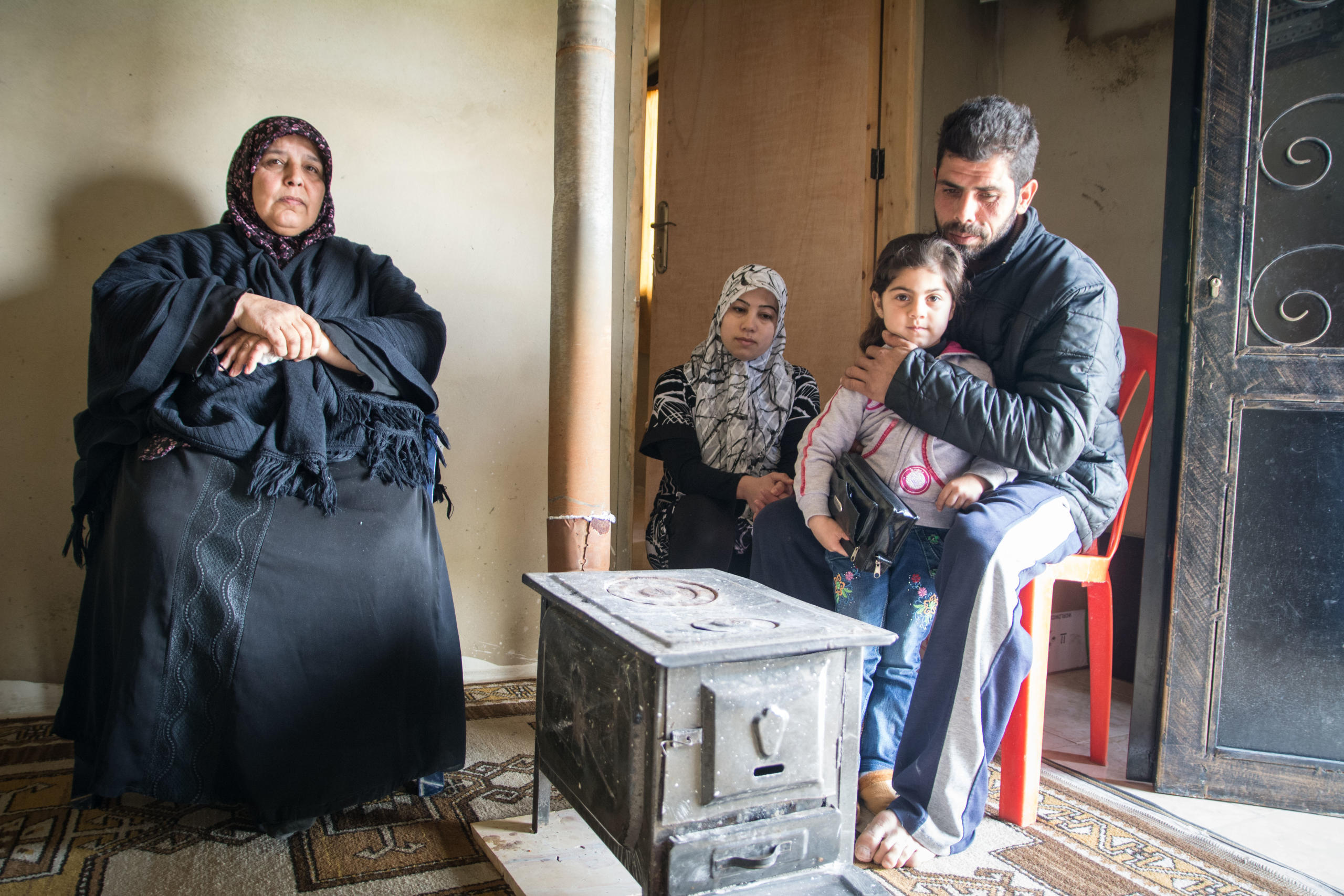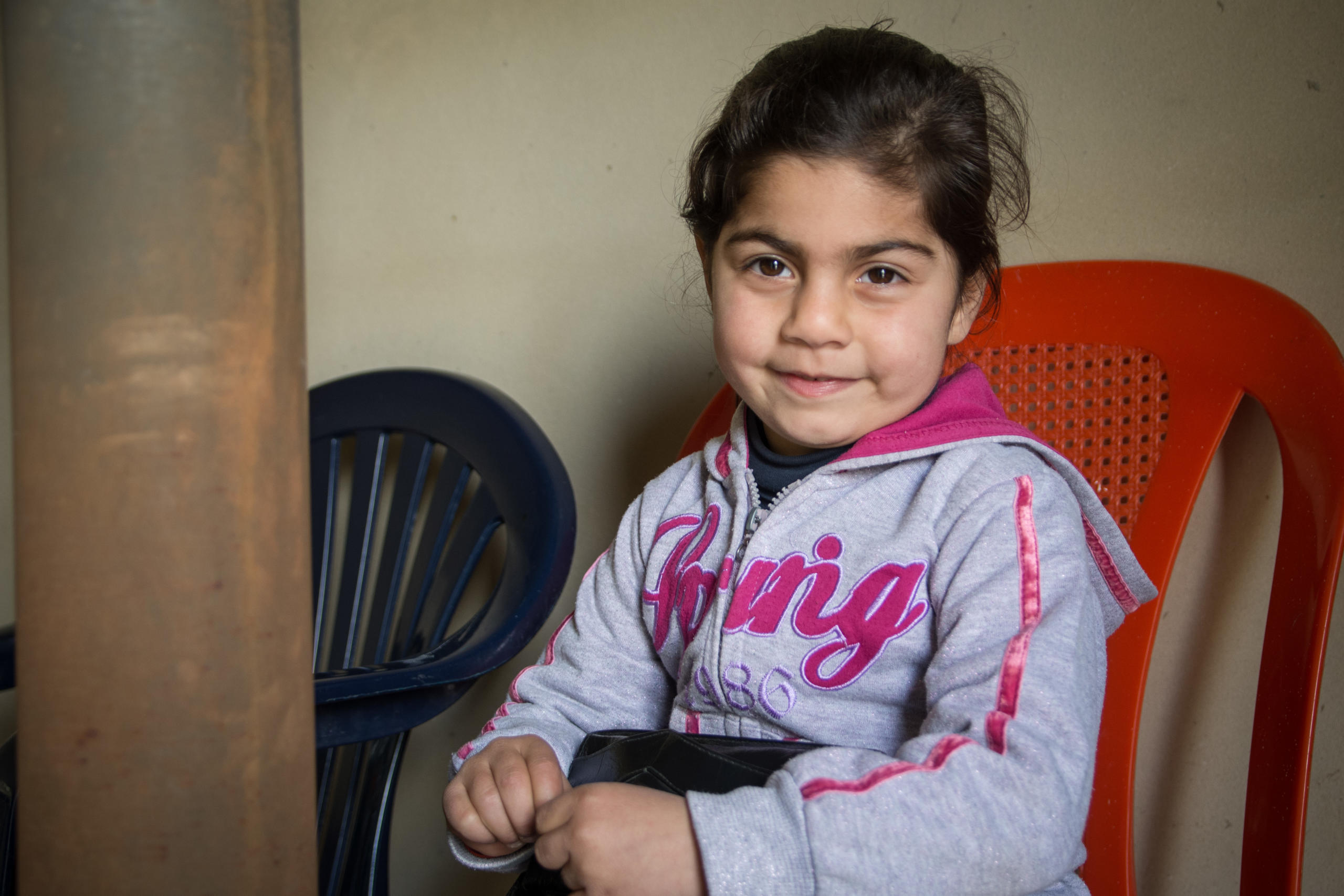
15 March 2011 was the day Safa's first child was born. It was also the day when activists called for a “Day of Rage” across Syria, inspired by uprisings in several other Arab countries.
Hundreds of Syrians protested in the capital Damascus and across Syria, calling for democratic reforms and the release of political prisoners. Several were arrested. Days later the first people were killed, and what started as peaceful protests soon escalated into a brutal war.

Ilham’s mother Safa (25), with her soontobe fouryearold girl in Lebanon where the family has been living as refugees since Ilham was one-year old. Photo: NRC/Tiril Skarstein
“We had an apartment building near Darayya outside Damascus, where my four brothers and I had a floor each, living together in the same building. The rooms were very small, but we were happy,” remembers the young girl’s father, Mohammad (35).
Now Darayya is known for the Darayya massacres, after hundreds of bodies were found in the town, most of them executed. The town in the suburbs of Damascus has witnessed heavy fighting and has been seized by oppositions groups and recaptured by government forces several times over.
“We fled as soon as the fighting reached our area. We had a young child – we had no other choice than to flee and find safety,” says Mohammad.
A new country
The family crossed the border into Lebanon and settled in Tyre in the South of Lebanon, where Mohammad’s sister already lived together with her Lebanese husband. Ilham became one of what is now about 3.8 million Syrian refugees in the neighbouring countries.
“I like Lebanon”, she says.
And do you like Syria?
“Yes...?”
The young girl smiles shyly. She was less than a year old when the family fled. She no longer remembers her country.

Ilham, her parents Safa and Mohammad, and Mohammad's mother, also named Ilham. Photo: NRC/Tiril Skarstein
Struggling
Lebanon has become her new home. In the beginning the family stayed in a room at Mohammad’s sister’s place, before receiving their own apartment with support from the Norwegian Refugee Council (NRC). NRC has helped a Lebanese landlord upgrade an unfinished building structure, and in return he has agreed to house the Syrian family for a year, free of rent. Ilham’s father is disabled and cannot work, and the family is struggling to get by.
“My brother is the only one who works. We all live off his money We are getting by, but only barely,” Mohammad says. “Sometimes we receive a few things from the Lebanese landlord.”
Ilham runs into one of the other rooms, and proudly shows me her teddy bears and a doll: Gifts from the landlord upstairs. The family is grateful. The landlord also provided them with some furniture for the apartment, they are all eager to tell. “Everybody in this town has been very helpful,” Ilham’s father adds.
Dreams of returning
Still he yearns to return to Syria. “Syria was a good place to live. There is no future for us, after Syria has been destroyed,” he says, looking sorrowfully at his smiling little girl, who is still too young to really worry.
The family has checked with friends back in Syria. Buildings have been turned into rubble, but their apartment is still there.
“We hope God gives Ilham some good days and that we one day can go back to Syria with her,” her father adds, knowing that the day of return is still somewhere in the distant future.
Before that, the family of three will become four. This spring Ilham expects a little brother, born as a refugee in Lebanon.

Ilham is one out of over 1,6 million Syrian children living as refugees in one of Syria's neighboring countries. Photo: Tiril Skarstein.
FACTS
Shelter in Lebanon
• Lebanon is generously hosting 1.2 million registered refugees from Syria.
• The Lebanese government has not authorised the establishment of camps for Syrian refugees. This has created huge demand for affordable housing, which existing supply cannot fulfil.
• The Norwegian Refugee Council supports Lebanese families to host refugees from Syria by upgrading shelters to minimum standard in exchange for a 12-month rent free stay for a refugee family.
• Each room is rehabilitated to meet standards established by the UNHCR-led Shelter Working Group, which are in keeping with international consensus-based standards, such as Sphere
• The majority of refugees in countries neighbouring Syria live in urban settings among the host communities spread throughout villages, towns and cities.


